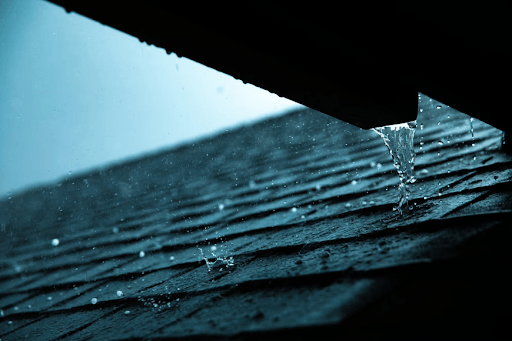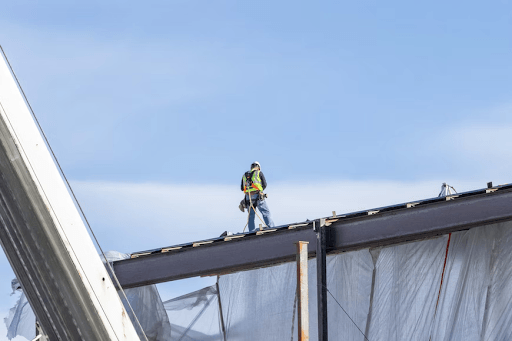When a roofing issue appears—a small leak, damaged shingles, or pooling water—it can be tempting to put off repairs.
The damage may not seem urgent. Perhaps the weather's bad, the budget's tight, or the building is occupied and busy. But while delaying roof repairs might feel like the easier or more affordable option in the short term, it often leads to much bigger problems—and much higher costs—in the long run.
Whether a commercial facility or a residential home, roofing issues rarely fix themselves. They tend to get worse, often quietly and invisibly, until they become unavoidable—and expensive.
Let's break down the hidden costs of postponing roof repairs and why timely action is always the better investment.
Escalating Repair Costs
Minor roofing problems—like missing shingles, small punctures, or isolated water stains—can usually be repaired quickly and affordably. But when left unattended, these minor issues often evolve into major repairs.
For example, a simple $300 fix today could turn into a $3,000 leak repair next month. A compromised seal around a skylight could lead to extensive mold damage and drywall replacement. A loose shingle in a windstorm can quickly turn into structural water damage if rain gets underneath.
Water intrusion causes some of the most expensive forms of damage in both homes and commercial buildings—not just to the roof but to everything underneath it.
Interior Damage to the Structure
Water doesn't just stop at the roofline. Once a leak begins, it can soak the insulation, rot wooden framing, damage drywall and ceilings, short out electrical systems, and promote mold and mildew growth.
This water may mean ruined furniture, damaged flooring, or health issues from mold exposure in residential homes. In commercial buildings, it can mean damaged inventory, destroyed equipment, business interruptions, or even tenant dissatisfaction.
Worse yet, interior damage is often unnoticeable until it's extensive; when stains appear, or ceilings start to sag, the repairs needed may be extensive and expensive.
Energy Inefficiency and Rising Utility Bills
A well-maintained roof acts as a crucial thermal barrier for any structure. However, air can escape or infiltrate the building once damaged, making HVAC systems work harder.
This extra power required means rising heating and cooling bills and uncomfortable living spaces in homes. In commercial buildings, energy inefficiency can cost thousands over time—especially in warehouses, office complexes, and large retail spaces.
Repairing roof damage helps restore proper insulation and airflow, improving energy efficiency and reducing ongoing utility expenses.

Increased Liability Risks
Delaying roof repairs also increases legal and liability risks for commercial property owners and managers.
Leaks can lead to slippery floors and injury claims from tenants, employees, or customers. Mold issues can cause health complaints or lawsuits. Code violations for unsafe roofing conditions may lead to fines or insurance complications.
Even homeowners aren't immune—insurance policies may not cover damage caused by neglect, which means homeowners could be left footing the entire repair bill themselves.
Decreased Property Value and Curb Appeal
For homeowners, a neglected roof can significantly lower a home's resale value. It's one of the first things buyers notice, and they often use roof condition to negotiate lower prices—or walk away altogether.
For commercial properties, roof issues can turn away prospective tenants or buyers and diminish a building's marketability.
Even visible signs of wear, such as sagging gutters, stained ceilings, or curled shingles, can send the wrong message about the property's overall condition.
Shortened Roof Lifespan
Every roof has a life expectancy, but regular maintenance and timely repairs greatly affect its longevity.
Minor problems that go unfixed can prematurely age a roof by years, forcing a complete replacement long before it should be necessary.
Considering the cost of roof replacement—especially on large commercial buildings—extending its life by even a few years through timely maintenance can represent significant savings.
Emergency Repairs Are Always More Expensive
Delaying repairs increases the chances of facing an emergency, such as sudden water intrusion during a storm or catastrophic failure under heavy snow.
Emergency repairs often come with premium pricing, off-hours labor costs, and rushed solutions that may not last.
Property owners can avoid these high-stress, high-cost situations by planning and scheduling
regular roof inspections and preventative repairs.

Work With CD Strong Construction
Whether it's a home or a commercial building, the cost of putting off roof repairs is almost always higher than the cost of fixing the problem early.
What starts as a simple patch job can quickly snowball into structural damage, interior destruction, lost energy, legal liabilities, and full replacements.
At CD Strong Construction, we can help you determine when it's time for a new roof (and install it safely and efficiently).
When you work with our team, we look out for you to ensure you get a quality roofing job that will last for years.



